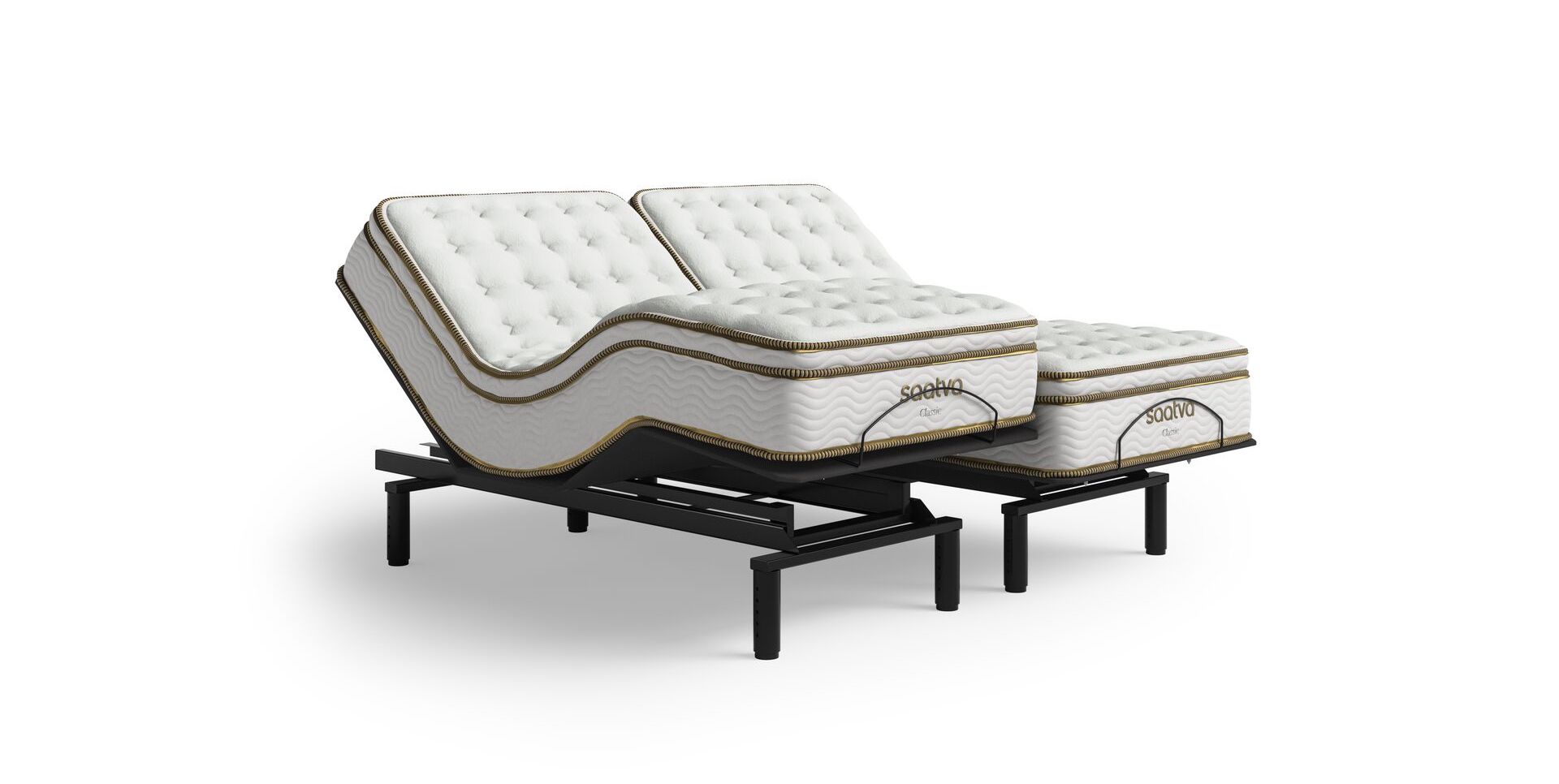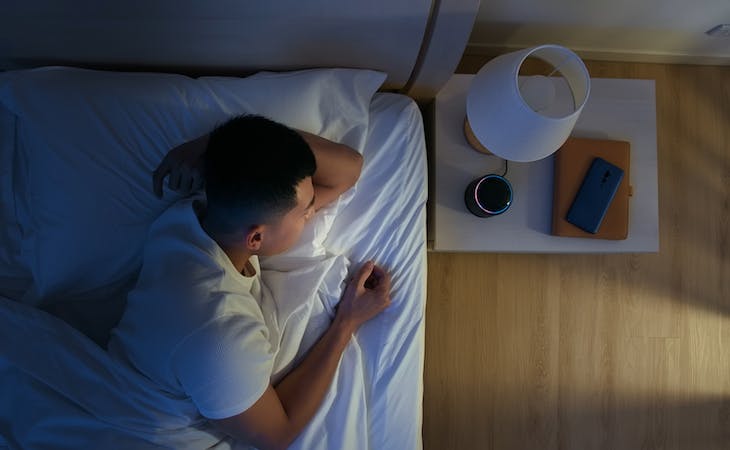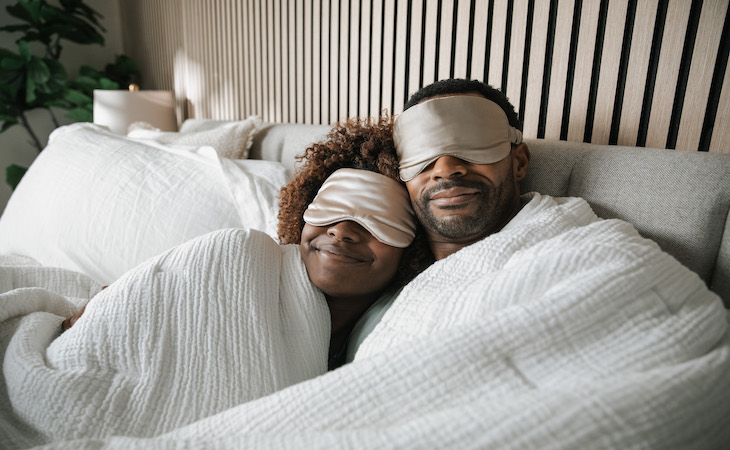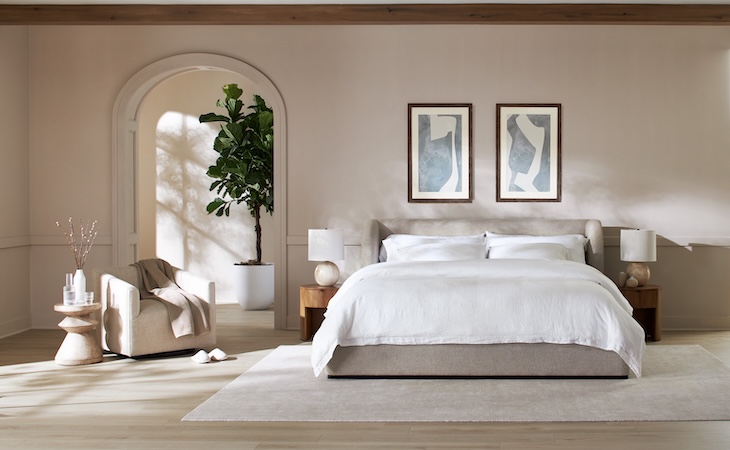If you or a family member is disabled, healing from an injury, facing a mobility challenge, or simply would like to “age in place” in your home, there are several ways you can make a bedroom more accessible.
The key is incorporating “universal design” principles into your living space. We asked top interior designers to share their thoughts on universal design, along with tips for setting up an accessible bedroom.
What is universal design?
The National Disability Authority defines universal design as “the design and composition of an environment so that it can be accessed, understood, and used to the greatest extent possible by all people regardless of their age, size, ability, or disability.”
Here’s what universal design means to the interior designers we spoke with:
Arizona-based Maegan Blau, owner and lead designer of Blue Copper Design, says that universal design approaches a space with “the goal of creating maximum usability for all persons,” adding, “it is a mindset within design to not only remove physical barriers but also create additions into the design plan that would be helpful to all varieties of people.”
Eliza McNabb, interior designer with nationwide design firm Hyphen & Co., defines the design principle this way: “Universal design means creating spaces that are equally comfortable, intuitive, and accessible for all,” she says. “People with or without disabilities should be able to have equal experiences in a space planned with universal design in mind.”
Aly Morford and Leigh Lincoln, co-founders of Pure Salt Interiors in Southern California, take a similar approach. “To us,” explains Lincoln, “universal design is designing a comfortable space for our client while communicating with them about their preferences for accessibility for their family and guests.”
Morford adds this about Pure Salt’s design philosophy: “Everything we do is designed to make your home as ‘you’ as it can be, no matter your age or style,” she says. “We believe in creating an accessible space for our clients and their families to grow together and enjoy all life’s moments, both ordinary and extraordinary.”
Related: A wellness designer shares tips on how to make your home healthier
Why is universal design important?
Universal design is important “because it elevates the experience of every user, and that improves everything as a whole,” says Blau.
In fact, to many people, universal design is essential. According to the World Health Organization (WHO), 15% of the world’s population, or one billion people, have a disability. The WHO estimates that 75 million people around the world require a wheelchair.
Blau has personally and professionally experienced the benefits of universal design. “As a person with a spinal cord injury, I now use a wheelchair to live my life,” she says. “As anyone can imagine, using an assistive device creates a different perspective and therefore a different way to utilize spaces and objects.”
If you’re keeping aging in place in mind, you might be interested to know this additional stat from the United Nations: the entire global population of people over the age of 65 is predicted to double by 2050. And AARP reports that nearly 90% of people 65 and over want to live in their homes as long as possible.
So, what does this all come down to? The need for accessible bedrooms just might be greater than ever before.
Related: 8 ways to design your bedroom for better sleep
How do you incorporate universal design practices into the bedroom?
Whether you’re disabled, experiencing limited mobility, or aging in place, our design experts share their words of wisdom for creating a more accessible bedroom.
Helpful distances
Ample space is key when designing a bedroom for aging in place or anyone with limited mobility. “Allow for at least 42 inches for travel paths as well as between the bed and wall for easy transfers,” says Blau. “Select a bed frame and mattress that is within 18 to 22 inches from the floor for easy accessibility and transferring height.”
As for storage, McNabb suggests placing hooks and storage at a variety of heights so someone in a wheelchair or with limited mobility can easily grab towels, hang a shirt, or access dresser drawers.
“Dressers under 32 inches are ideal for wheelchair users, as the top can easily be reached,” she says. “Hooks at 48 inches above the floor can be reached by those in wheelchairs or with limited mobility.”
Lincoln emphasizes open space when incorporating universal design in a bedroom. “When remodeling a smaller home, we maximize every inch of the home’s space with function and comfort in mind,” she says. “Creating a more open environment will help with physical limitations as well.”
Practical flooring
“Choose a hard flooring material such as tile or wood to allow for easier mobility for those with assistive devices,” Blau advises. “You may want to consider using a low pile rug under the bed to add extra grip on the floor for transferring out of wheelchairs.”
Easy-grip hardware
McNabb recommends applying the “closed-fist test” to all knobs, pulls, and handles in a bedroom. “If you can’t successfully use the hardware with your fist closed, opt for D-shaped pulls that are easier to grip,” she says.
Smart features
With today’s technology, you can easily create a smart bedroom outfitted with voice and light controls.
“Utilize smart home devices to sync to lights and other electronics,” recommends Blau. “This can allow people to turn off lights with their voice or phones without having to get out of bed.”
McNabb echoes this tip. “With the advent of voice-activated home assistants, it’s easier than ever to control lighting, music, and TVs simply by talking to them,” she says. For those with limited mobility, controlling these systems without getting out of bed can provide a greater sense of control, safety, and independence.”
Layered lighting
“For aging eyes or people with visual impairment, it is difficult for the eyes to adjust from low to bright light,” notes McNabb. “Glare can also cause discomfort.”
That’s why she suggests overall ambient lighting in the home, in addition to dimmable task lighting where you read (such as a dimmable sconce right next to the bed), as well as window sheers to let natural light in while reducing glare.
“If you have the means, motion-activated low lighting under the bed or in the hallway can provide illumination if you need to use the restroom in the middle of the night without requiring the eyes to adjust to bright light or disturbing anyone else who may be sleeping in the room,” says McNabb.
Another solution for aging in place: an

Our deluxe adjustable base with even more customized comfort options
, which makes it easier to get in and out of bed. Some adjustable bases have under-bed lighting so you can see where you’re going if you wake up in the middle of the night to use the bathroom. (Learn more about the health benefits of an adjustable base.)
The bottom line on universal design
Blau reflects on the concept of universal design: “It is smart to plan for the future,” she says. “The goal of life is to age, and though it is a great thing, aging gives us some precarious physical situations.”
The good news: “There are plenty of ways to implement accessibility into a current or future home to accommodate aging family as well as create a welcoming space to those with disabilities or mobility devices,” says Blau.
Bedroom looking a little cluttered these days? Here’s how to use the KonMari organizing method.




